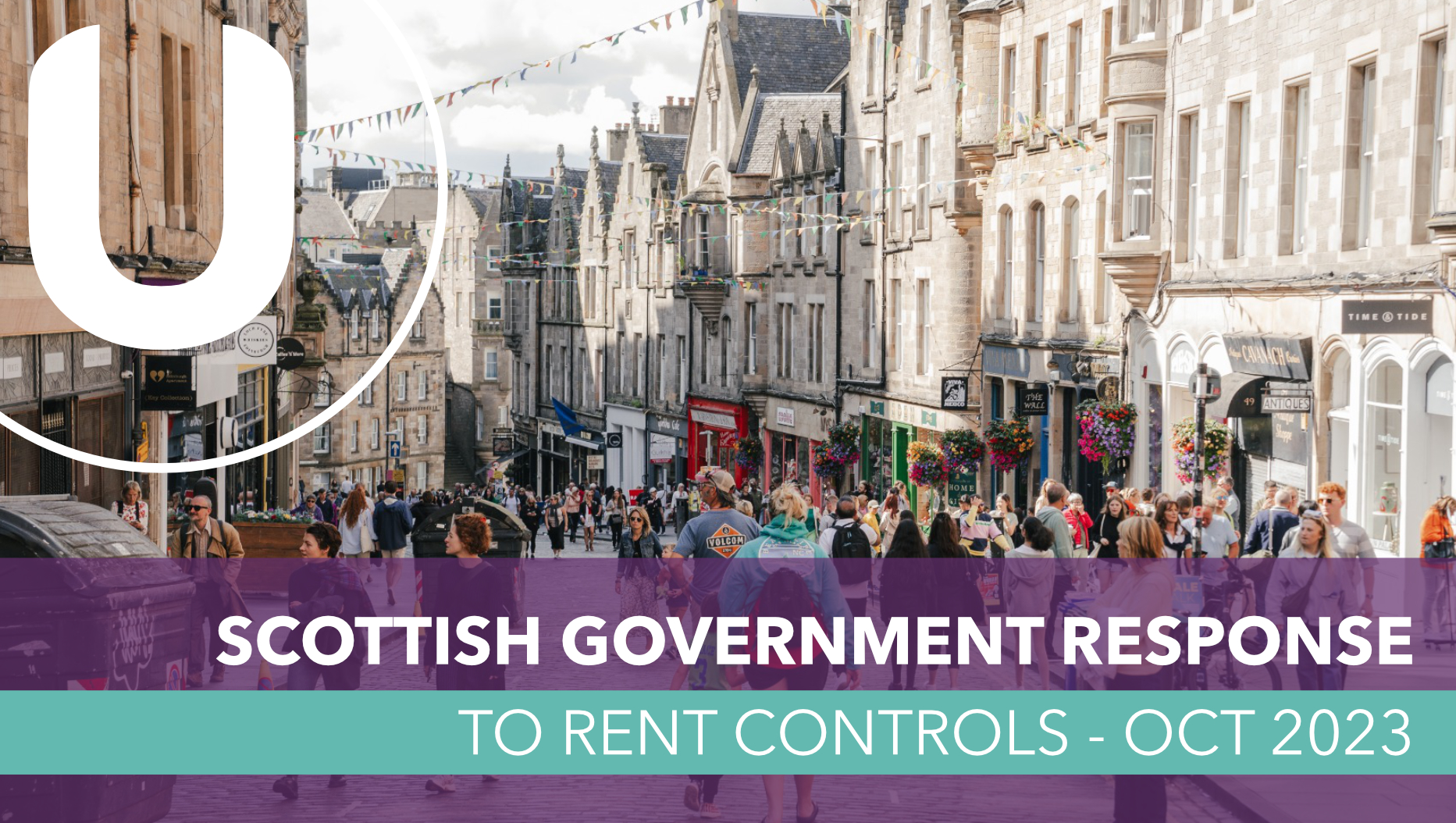On the 27th of October, the window closed on the consultation period and the opportunity for stakeholders in Scotland’s private rented sector (PRS) to provide feedback to the Scottish Government on their proposed changes to the PRS, labelled ‘A New Deal for Tenants’. In addition to completing the feedback questionnaire, Umega’s Managing Director sent an additional email response on behalf of Umega relating to the controversial topic of rent controls.
As those working in the industry will know, the topic of rent control has been a topic of much discussion and criticism over the last few years. Given the opportunity to respond, Neil sent the below text submission to accompany the Umega response:
Hello,
I responded to the Landlord and tenant engagement questionnaire on rented sector reform on the Scot Gov website but I was unable to provide sufficient feedback and comments within the prescribed answers of the questionnaire. I’m the Managing Director at Umega Lettings. We let and manage more than 2,000 properties and tenancies in Edinburgh. I’ve been in my current role for almost 17 years.
I want to provide additional comments and feedback on the proposals relating to rent controls specifically, but firstly, I want to provide a bit of context on what we’ve observed in the Edinburgh rental market over the last 18 months.
It’s been a brutal market for prospective tenants. There are hundreds of tenants competing in some cases for one property. The rental market in Edinburgh peaks in the summer where the disparity between the number of tenants looking for accommodation vs the number of available properties, is at its worst. The situation for tenants is desperate. Tenants don’t understand that despite having plenty of money and solid references, there is practically nowhere for them to rent.
As a consequence of this, we’ve seen rents rise rapidly on the open market with tenants willing to pay whatever it takes to secure quality accommodation in the city centre, whilst still meeting the requirement that the rent does not exceed 40% of their monthly income.
The difference in the last 18 months compared to my previous 15 years working in Edinburgh lettings is that the number of people looking to rent in Edinburgh has gone through the roof. This has coincided, not coincidentally, with the number of available rental properties dropping dramatically to around a third of what there’s been historically. Tenants are renting for longer than ever before and fewer new properties are coming to the market which means the number of available properties on the market has dropped significantly.
Rising rents on the open market are happening because there are not enough homes for people to rent that want/need to, and tenants are willing to pay more as a result to secure somewhere to live.
The overall size of the PRS in Edinburgh is difficult to quantify. The best way to gauge its size is from the number of deposits that are protected by the Tenancy Deposit Scheme providers. These figures illustrate that, for the first time, the number of protected deposits is not increasing and over recent months, has started to decline. The size of the PRS in Edinburgh is shrinking at a time when more people are looking to rent in Edinburgh than ever before.
The decision to restrict the rate at which rents can rise is understandable and, looking at it simply, obvious. This ignores any link between restricting rents and the subsequent number of landlords who choose to continue renting their properties in the PRS.
The decision to bring in rent controls is extremely unpopular with landlords. I can’t stress this point enough. Bringing in rent controls will undoubtedly mean that there will be fewer landlords remaining in the sector than if rent controls are not introduced. Does the Scottish Government have an estimate of what will happen to the overall number of properties in the market if it introduces permanent rent controls, and what the knock-on effect on tenant choice will be? Does the Scottish Government even accept there is a link between their legislative decisions and the number of properties on the market? The impact on the supply of rent controls should be a big part of the conversation right now but it appears to be completely missing from the consultation that’s taking place.
Giving local authorities the power to limit the rate at which rents can rise sounds like it will help tenants but what about the tenants who are effectively locked out of the private rented sector as a result of critically low property availability? How will the Scottish Government respond to the growing number of private sector tenants at risk of homelessness as a result of decreasing stock levels? These are the important questions that I worry are being ignored at this critical stage of the process.
I hope this makes sense and I’ve been able to explain my perspective and my concerns for consideration as part of the consultation.
Regards,
Neil McInnes
Managing Director
Umega Lettings
